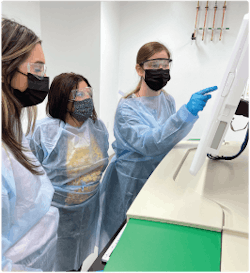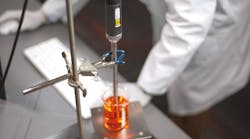The industrialization of cell and gene therapies (CGTs) is a prominent issue in the biopharma industry. These novel medicines have rapidly advanced to the stage where both significant efficacy and safety have been achieved in the clinic. Unfortunately, the existing manual, labor-intensive, open lab-scale manufacturing solutions for viral vector production and genetic modification of cells are not practical to properly commercialize these innovations.
Equipment vendors, raw material suppliers and drug developers are working together to address these issues. While some challenges, such as scalability and capacity are well-known, there are others that have received minimal attention, yet can have a deep impact on timelines.
Even when the goal is racing to be the first-in-human-studies to demonstrate a proof of concept, companies need to stay focused on striving for a right-the-first-time approach in their process development efforts. These efforts can be made internally or by connecting with an experienced contract development and manufacturing organization.
Investing in robust cell lines
Unlike the monoclonal antibody (mAb) field where manufacturing is standardized using platform technologies and producer cell lines, the CGT field is still in early growth stages and just beginning to define good systems for viral manufacturing. Most viral vectors are currently produced in human HEK 293 cells. In general, cells are not designed to make viruses and require additional helper function using recombinant techniques.
To do this properly, time must be invested in developing robust cell lines to consistently achieve the yield, quality and potency required. Having these robust cell lines offers stability and high viral production capacity, which is essential to a streamlined process. Rather than using multiple different cell lines with limited viral production abilities, it is better to take the time to understand the specific viral vector requirements and develop a well-characterized cell line that can meet expected production demand.
Start with good plasmids
Proper sequencing of plasmids is necessary to ensure that no unwanted mutations are present. Tradition methods such as 2x Sanger sequencing, however, cannot efficiently pick up mutations that can impact viral vector quality.
The emerging and best approach is to use next-generation sequencing (both long and short read sequencing) to efficiently validate sequence integrity of plasmid ITRs and LTRs to obtain a clear picture of genetic sequencing information encoded within these plasmids. ITRs and LTRs determine not only the packaging of DNA for the virus (full vs. partial vs. empty capsids), but also the in vivo potency and long-term stability of the resulting gene or gene-modified cell therapy.
In addition, when plasmids are produced in incorrect bacterial strains, the master cell bank can contain undesirable, low-level sequence variants that are not detectable using Sanger sequencing. This situation can significantly impact time to market, as regulatory bodies often consider such “contaminated products” as mixed drug products that could impact approval.
Most autologous CAR T-cell therapies are produced by modifying patient T cells using lentiviral (LV) vectors, which are RNA viruses. These viruses can show decreased potency issues due to a phenomenon referred to as cryptic splicing, in which the gene of interest being placed into the T cell is aberrantly spliced resulting in reduced expression.
Conventional polymerase chain reaction (PCR) analysis cannot detect cryptic splicing, so the genome appears whole. The use of next-generation sequencing is therefore essential to ensuring the production of clean, high-titer viral vectors with high potencies for use in the production of modified cell therapies.
Explore the entire formulation space
Just as important as understanding the cell line and raw materials is fully exploring the entire formulation space for CGTs prior to entering the clinic. Often the rush to get to market will encourage some companies to skip this important step in developing a drug with all the required quality attributes. But when gene therapy formulation is an afterthought, it can require great time and expense on the back end for reformulation or even further process development.
It is true that for certain gene therapies, very specific drug product design is necessary as dictated by the indication and route of administration. Eye diseases are a primary example. Delivery into the eye necessitates very small drug volumes and therefore very high viral vector concentrations. There is an added layer of complexity with early clinical trials given that the dose range is often wide; formulations need to be not only stable at high concentration, but amenable to dilution to the lowest dose required for the study.
Both high concentrations and dilution processes can be detrimental to viral vectors. Effective formulation of gene therapy products prior to phase 1 trials is the best strategy for overcoming these challenges. It is particularly useful to have extensive experience working with different adeno-associated virus (AAV) serotypes and other viral vectors. This knowledge can be leveraged to predict which excipients will afford the optimum formulation.
What about subvisible particles?
Gene and gene-modified cell therapy developers should monitor the presence of subvisible particles beginning at the earliest development stages. As drug products move to later development stages, regulatory expectations regarding subvisible particles (which have immunogenicity potential that can lead to drug degradation) become stricter and more extensive.
Learning in phase 2 that a CGT candidate is suboptimal because it contains subvisible particles is too late. The formulation may need to be modified or the entire process revisited, both of which can add significant cost and delays. The best approach is to determine how filtration, dilution and other unit operations affect subvisible particle generation at the beginning of process development. Applying this knowledge throughout the later stages of development can help avoid issues associated with excessive subvisible particle content in the final product.
Build in flexible manufacturing solutions
Kayla Pasake, Research Associate; Dana Cipriano, Vice President of Testing and Analytical Services; and Allyssa Staboleski, Senior Scientist, Center for Breakthrough Medicines
Most cell therapies developed to date have targeted blood cancers due in part to the challenges associated with treating solid tumors, which requires selectively delivering cells to the tumor site and getting them to penetrate deep into the tumor. The tumor microenvironment resists attack and targets tumor cells without killing host cells, which can be difficult due to a lack of well-defined, tumor-specific antigens.
New technologies such as bispecific CARs and tandem CARs take advantage of certain features of tumor cells to ensure targeted delivery and penetration. Determining the maximum tolerated doses for such cell therapies (which often need to be high to tackle the large numbers of cancer cells) is difficult, however. Dose-escalation studies are generally needed.
Such trials are particularly challenging with autologous cell therapies given that there is one batch per patient. In addition, side effects with cell therapies typically can take days or weeks to manifest. Therefore, cohorts often overlap, with higher doses administered to patients in the next cohort without knowing the full response of the previous cohort.
It is not uncommon in the middle of these escalation studies (and in the middle of manufacturing additional products) to find that further dose escalation is not possible. The challenge then becomes manufacturing de-escalation.
The best solution is to establish a flexible process that allows for changes in production levels. One option is to adjust cell concentrations, while keeping the intended volume/container the same. However, a modular approach to product containment, where every batch consists of several sizes of containers, allows 2x-5x de-escalation. The former presents additional analytical challenges that are not an issue in the latter strategy.
Ideally, during early phase development, multiple scenarios are simulated with respect to potential dosage demand. The key is to find the optimum balance between what might be needed for the clinical studies and what is possible on the manufacturing floor. That is not always obvious, because the cells used to produce these autologous gene-modified cell therapies come from very sick patients and don’t always grow well.
A modular approach to drug product presentation helps to address clinics’ need for access to the exact volumes of products required for infusion. It allows delivery of the specific dosages needed throughout the entire dose-escalation study as efficiently as possible.
Bridge the analytics gap
Process and product understanding is essential to successful development of high-quality CGT products. Integration of state-of-the-art analytics from bench-top technology development through GMP manufacturing accelerates process development and scale-up.
The advanced analytical techniques used today, including proteomics, mass spectrometry and other very detailed, high-sensitivity, high-accuracy methods, help drug developers understand how changes to the process impact post-translational modifications (glycan modifications, deamidation, etc.), viral particle stability, contamination profiles (host-cell DNA, host-cell proteins, etc.) and other product attributes. This knowledge is crucial to enabling the development of robust, highly reproducible, high-yielding processes that afford high-quality cell and gene therapy products.
The maximum benefit from these technologies is only gained, however, if they are immediately accessible and there is no need to send samples out to third-party analytical labs. The need to use multiple vendors with multiple timelines dramatically slows process development.
Having a full suite of state-of-the-art analytical capabilities places control in the hands of the drug developer where it belongs. It allows rapid evaluation of the impact of process changes on product attributes beginning at the earliest stages of development. Issues can be eliminated before processes reach the pilot/demonstration scale and thus the potential to experience catastrophic failure late in the development timeline can be avoided.
With integrated analytics on site, products and processes are well characterized and well validated and specialized formulation solutions are not needed to compensate for performance issues.
Working towards industrialization
Considering the complexities around industrializing CGTs, innovators and sponsors should endeavor to implement right-first-time processes that utilize industry best practices. CDMOs should provide expert teams that are integrated with customers to ensure that every step of the process from plasmid design to fill/finish is well planned. Robust support for product design activities must include optimal formulation to meet the intended target product profile (presentation, route of delivery and compatibility with devices).
For gene therapies, the viral vector targets will guide the creation of an optimum manufacturing and formulation design space. Experience with a range of cell therapies is leveraged to select the appropriate types of cells used, indications, volumes and overall anticipated doses. Closed, automated cell therapy manufacturing processes are used to produce, store and ship products in both vials and bags, under required cryogenic conditions.
The ability to access next-generation technologies via a CDMO can also be beneficial to drug developers. CDMO activities are built around the mindset of achieving better process and product characterization using an integrated analytics approach that helps to continue building knowledge of the product attributes that are critically important to mitigating risk and ensuring success for CGTs at any quantity.







